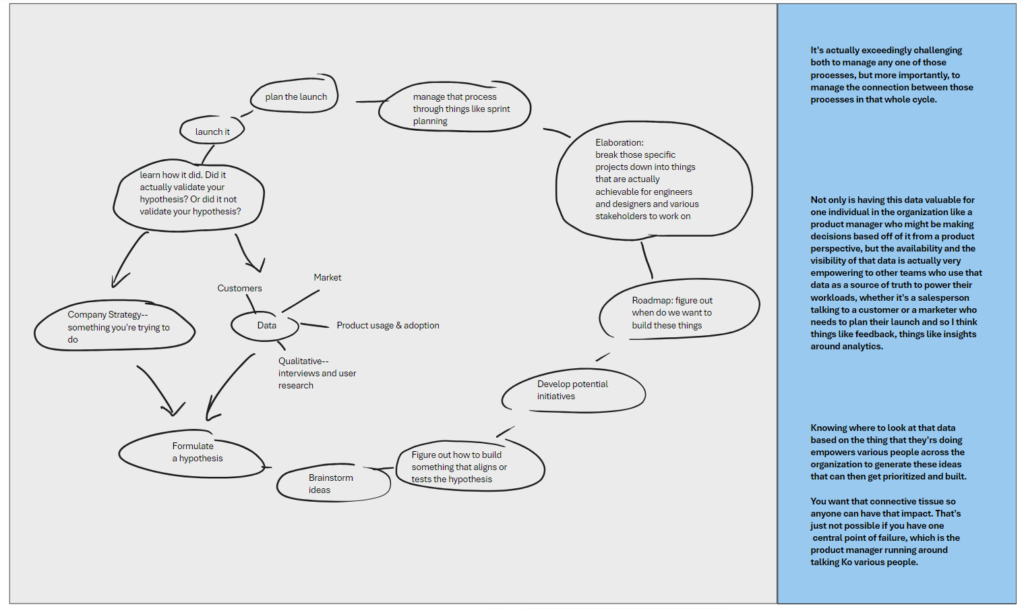Overview: Phase Deliverables by Stage
- Phase 1 (Foundation): Charter, Sponsor Commitment, Initial Metrics
- Phase 2 (Systems): Systems of Record, Data Culture Assessment
- Phase 3 (Standardization): Roadmap Template, Portfolio Planning, PM Enablement Checklist
- Phase 4 (Iteration): Feedback Loop, QBR Template, Process Sunset Framework
- Phase 5 (Scaling): Playbook Compilation, Ops Impact Report
Phase 1: Foundation & Alignment
Goal: Establish purpose, sponsorship, and initial success criteria.
Deliverables:
- Product Ops Charter – Defines mission, scope, and success measures.
- Sponsor Responsibilities & Commitment Agreement – Ensures executive buy-in and accountability.
- Initial Metrics Worksheet – Co-created with sponsors to set measurable goals (planning efficiency, data adoption, PM enablement).
Key Milestones:
- Charter signed off by exec sponsor.
- Sponsors publicly communicate commitment to the org.
- Initial metrics agreed and baselined.
Phase 2: Systems & Data Landscape
Goal: Understand the current state of data and tools.
Deliverables:
- Core Systems of Record Worksheet – Documents existing tools (feedback, analytics, project tracking, roadmapping).
- Data-Driven Culture Assessment – Captures baseline culture and readiness for data-driven decisions.
Key Milestones:
- Systems mapped with ownership assigned.
- Data readiness assessment completed and shared.
- Prioritized list of gaps / opportunities identified.
Phase 3: Standardization & Enablement
Goal: Drive consistency across product practices without reducing autonomy.
Deliverables:
- Standardized Roadmap Template – Creates consistent visibility for stakeholders.
- Portfolio Planning Framework – Aligns multiple teams to shared planning cadence.
- PM Enablement Checklist – Defines what “great product enablement” looks like (dashboards, templates, training).
Key Milestones:
- Standard roadmap adopted by majority of teams.
- First portfolio planning cycle run using shared framework.
- PM satisfaction with enablement measured and baselined.
Phase 4: Feedback & Iteration Loops
Goal: Build Product Ops as a continuous improvement function.
Deliverables:
- Feedback Loop Template – Structured process for PMs and stakeholders to suggest improvements.
- Quarterly Business Review (QBR) Template – Captures and communicates progress against metrics.
- Process Sunset Framework – Criteria for retiring or evolving processes that don’t add value.
Key Milestones:
- First QBR held with measurable outcomes shared.
- Feedback loop adopted and functioning.
- At least one outdated process formally retired or updated.
Phase 5: Scaling & Embedding
Goal: Institutionalize Product Ops as a trusted, value-driving function.
Deliverables:
- Full Playbook (compiled) – One-stop resource for all templates, worksheets, and frameworks.
- Ops Impact Report – Narrative + data on how Product Ops has improved speed, clarity, and outcomes.
Key Milestones:
- Playbook distributed org-wide.
- Impact report shared with exec team and stakeholders.
- Product Ops positioned as a core enabler in strategic planning.

